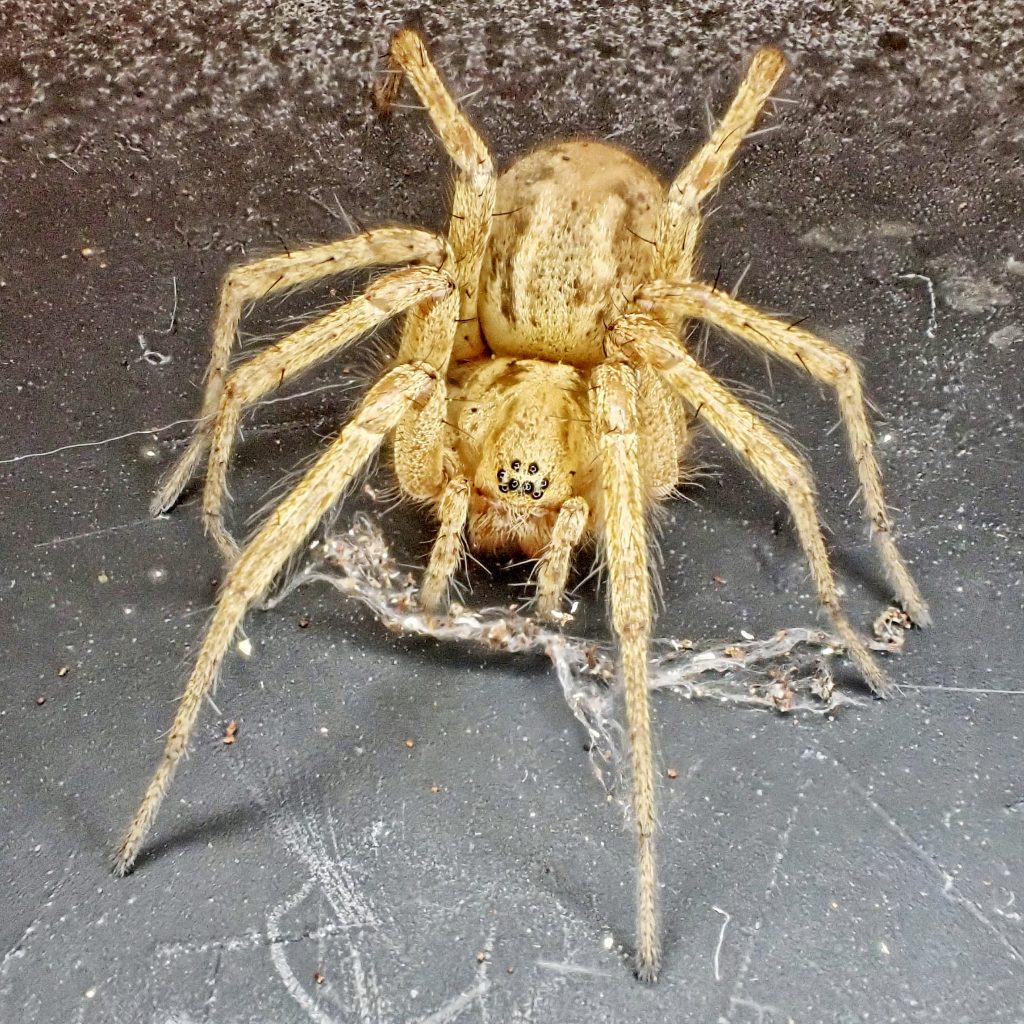
I think I found one of these on my first dedicated spider hunting expedition of the year, but whilst trying unsuccessfully to photograph it the spider fled the scene. So the next time I encountered one of these flat webs with a funnel at one end, two weeks later in similar habitat but on the opposite side of Clark County, I made sure to capture it before it could escape. But then I found a similar web a few feet down the trail, and managed to both photograph the spider and capture it, although I thought it was probably another female of the same species.
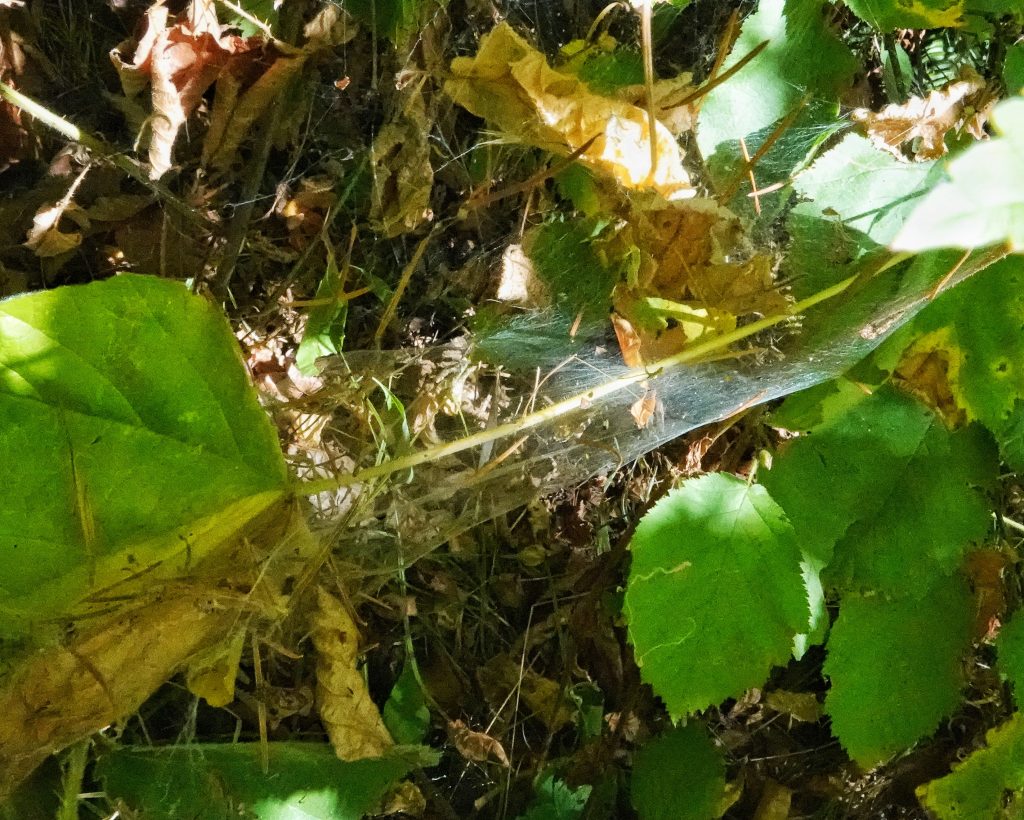
I had the idea that these two spiders were in the family Agelenidae, but I went through the key anyway, and the lack of a cribellum, non-fused chelicerae, 3 clawed tarsi, and multiple trichobothria in a single row and trochanters only slightly notched on pairs 3 & 4, and not at all on 1 & 2, led me to Agelenidae as expected. It was a little dicier getting it to Agelenopsis, because I wasn’t completely sure that what I was seeing was a coupling cavity on the rear of the epigynum, though it was obvious there was no stylus or lateral spurs on the epigynum, and the eye rows were strongly procurved. Then I looked at the other three genera that could be reached from that couplet about the coupling cavity, and they were all genera found in the se US, so I figured Agelenopsis must be correct.
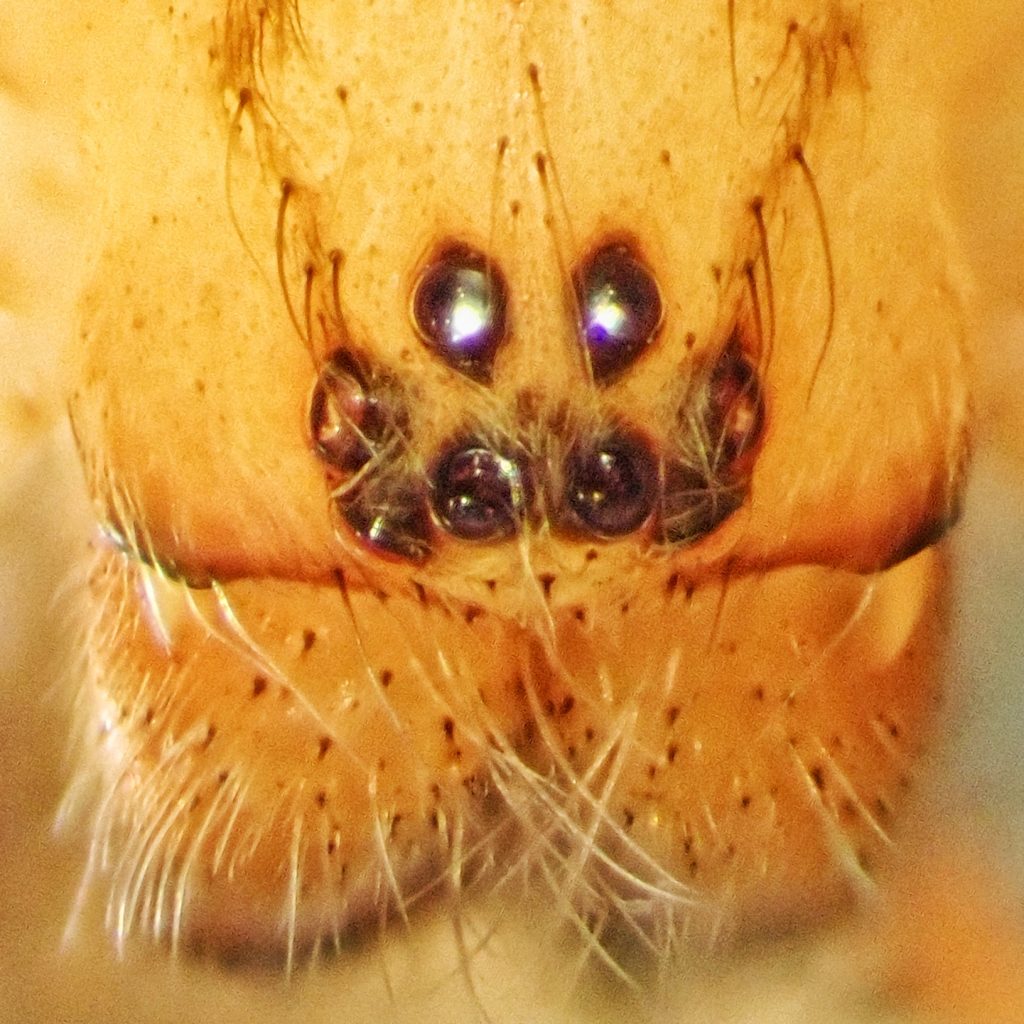
Thus far I could do everything from Vincent Roth’s “Spider Genera of North America”(1993), with an assist from the illustrations in “Spiders of North America: an Identification Manual” (Ubick et al.; 2005). But now I had to hunt down the revision of Agelenopsis by Whitman-Zai et al (2015), and was getting pretty frustrated by paywalls, until I remembered Rod Crawford saying that the NMBE – World Spider Catalog site made most spider taxonomy papers available, and I found it there. And once I had that paper it was pretty straightforward to compare the epigyna illustrations and conclude that this was Agelenopsis oregonensis.
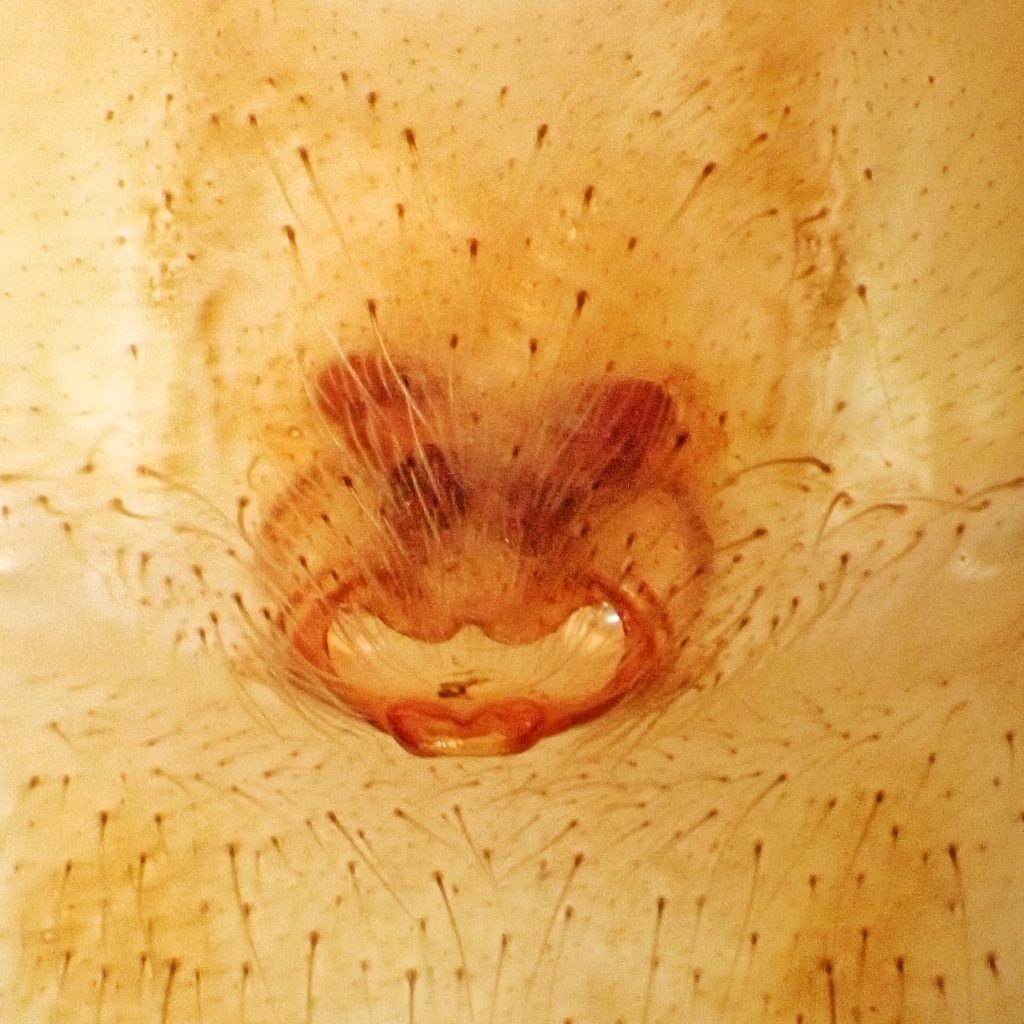
When Rod Crawford confirmed this identification he mentioned that the “male palp has an outsized embolus (dark, narrow tube) that extends far beyond the edges of the bulb.” So, when I found a male Agelenidae a few days later, and could see with the naked eye how far out the embolus extended, I thought I might have a male Agelenopsis oregonensis, and a few minutes under the ‘scope with Whitman-Zai’s key proved that to be the case. This whole process led to the supremely gratifying feelings I talk about in the blog ‘Some Notes on Spider Mania’.
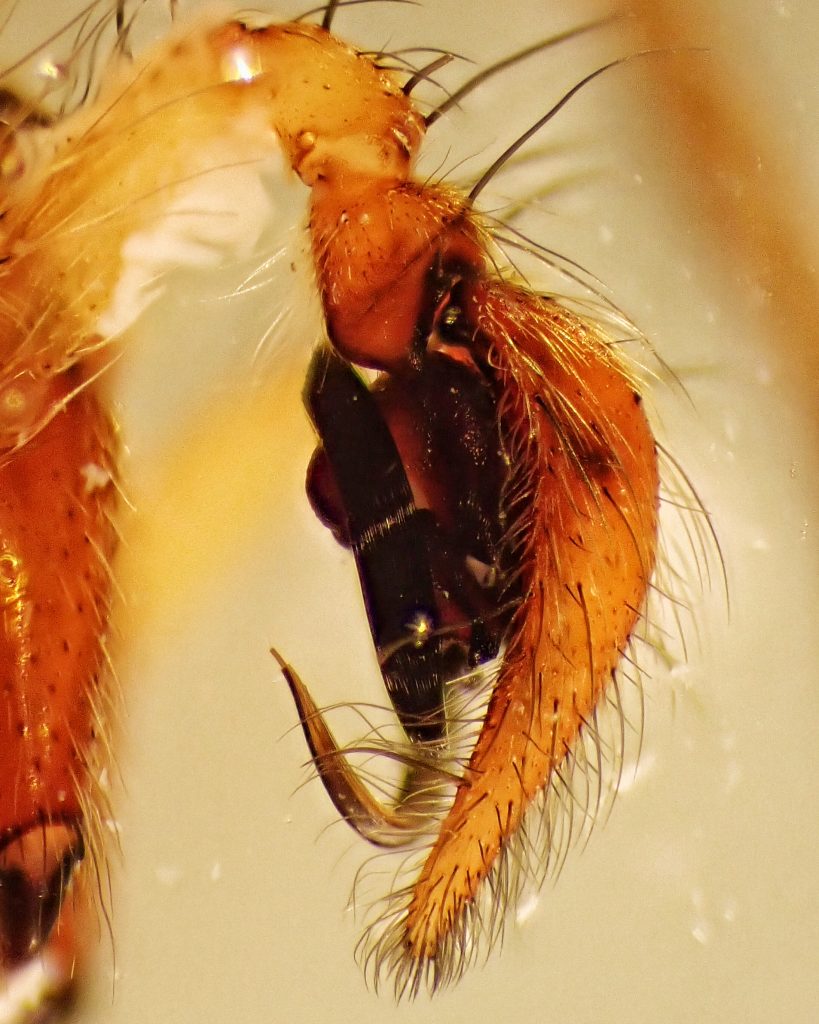
These spiders build a non-sticky sheet web, with a funnel shaped retreat in the corner. The females I found had bound together a leaf, and built the retreat inside it. The male was in a stainless steel sink in a county park, and had a limited web that was mostly the retreat, although there was a dead, and seemingly fed upon, similar sized spider (which may have been the same species) in the webbing outside of the retreat. Because the web isn’t sticky Agelenopsis oregonensis relies on its speed, strength, and venom to subdue prey in the web.
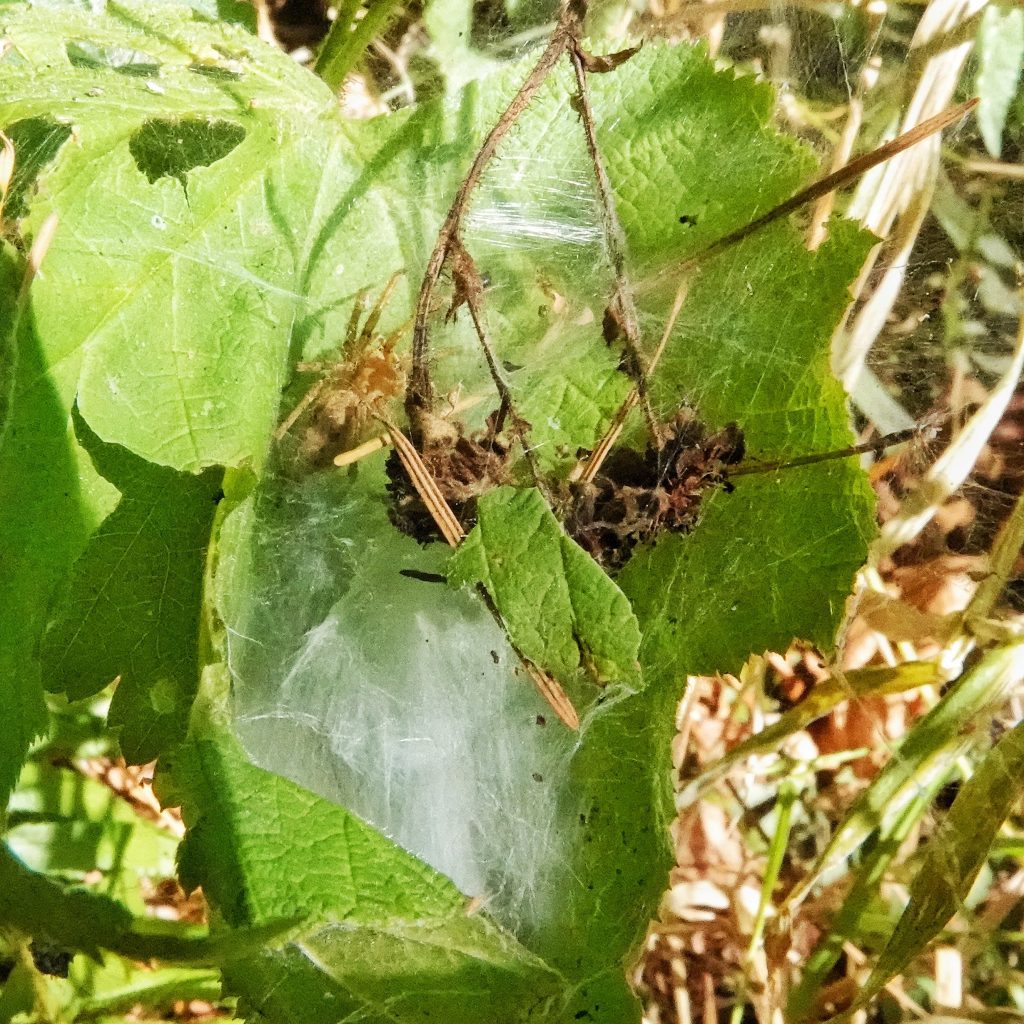
Adult females coat their webs with pheromones, and adult males can often be found wandering in the fall in search of those pheromones (which is probably how the spider I found ended up in that sink). Females of many agelenids show receptivity to the courtship of the males by becoming inert (technically called cataleptic), and the male then drags her into her retreat to inseminate her.
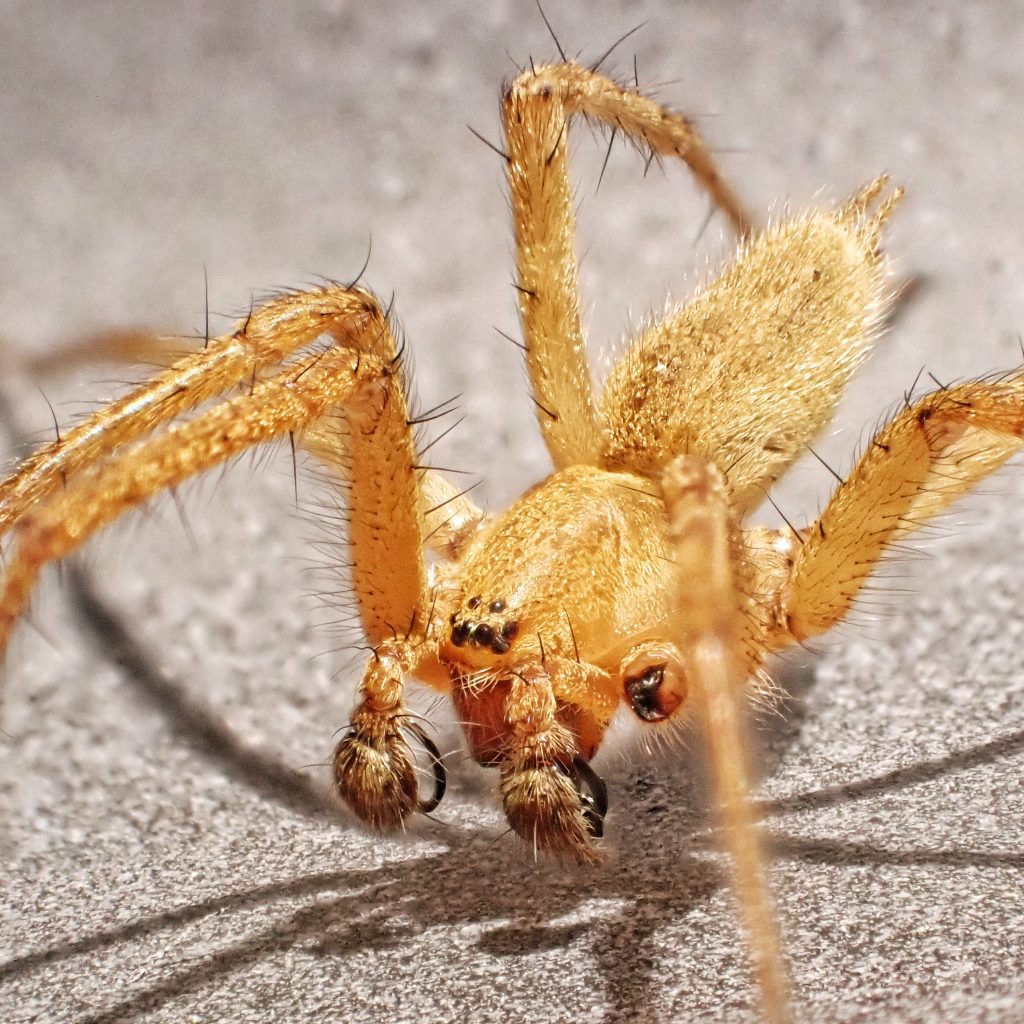
Description– Medium sized (body length of males 7.45-9.65mm; females 7.95-11.55) mostly yellow brown spider with two dark, broken lines on the abdomen separated by light colored chevrons, a mottled carapace, and long posterior spinnerets that extend well past the abdomen.
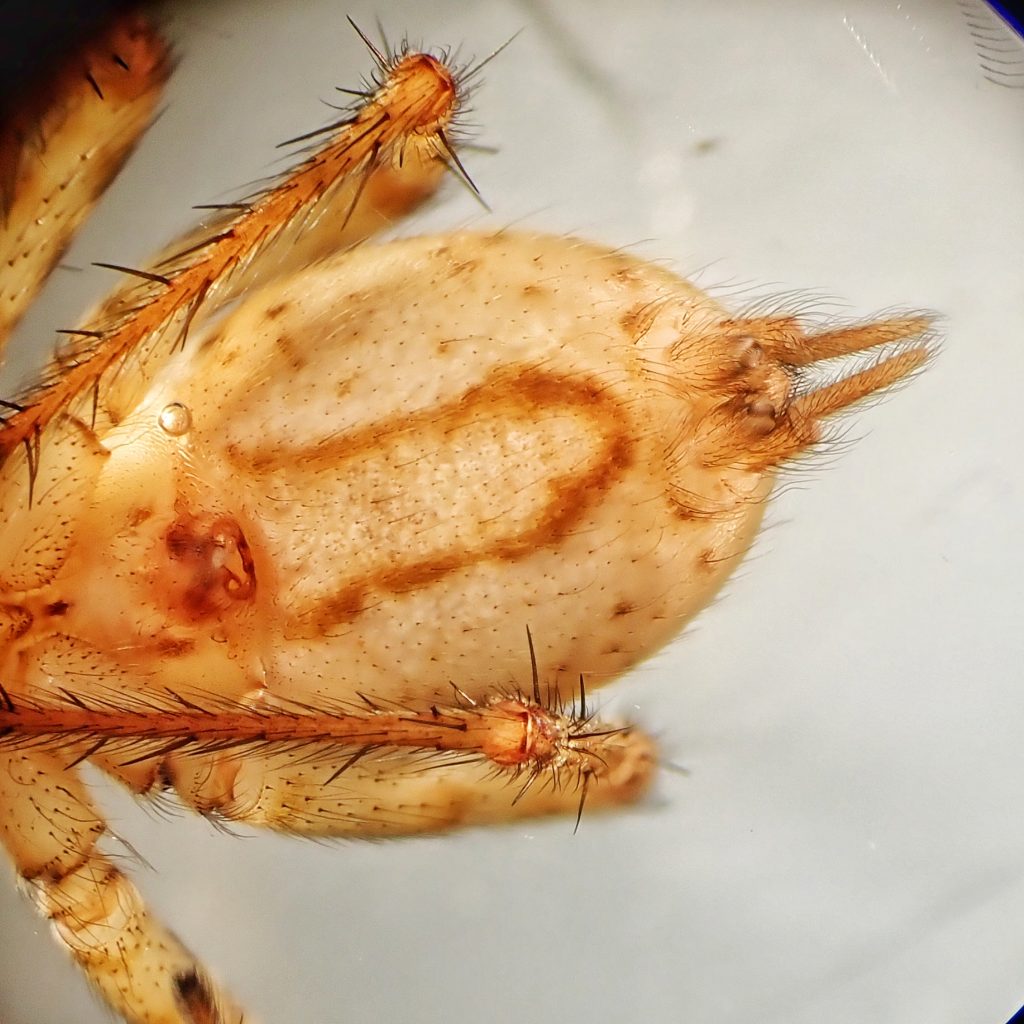
Similar species– Differentiation of Agelenopsis requires microscopy and a key- https://wsc.nmbe.ch/pdfdownload/a81cdcff6e5fda3fdc33ba6c0ff740b67M857vRa2TKIZ5U is the most recent one; Tegenaria and Eratigena spp. tend to be darker brown, and Calilena spp. tend to be more grey.
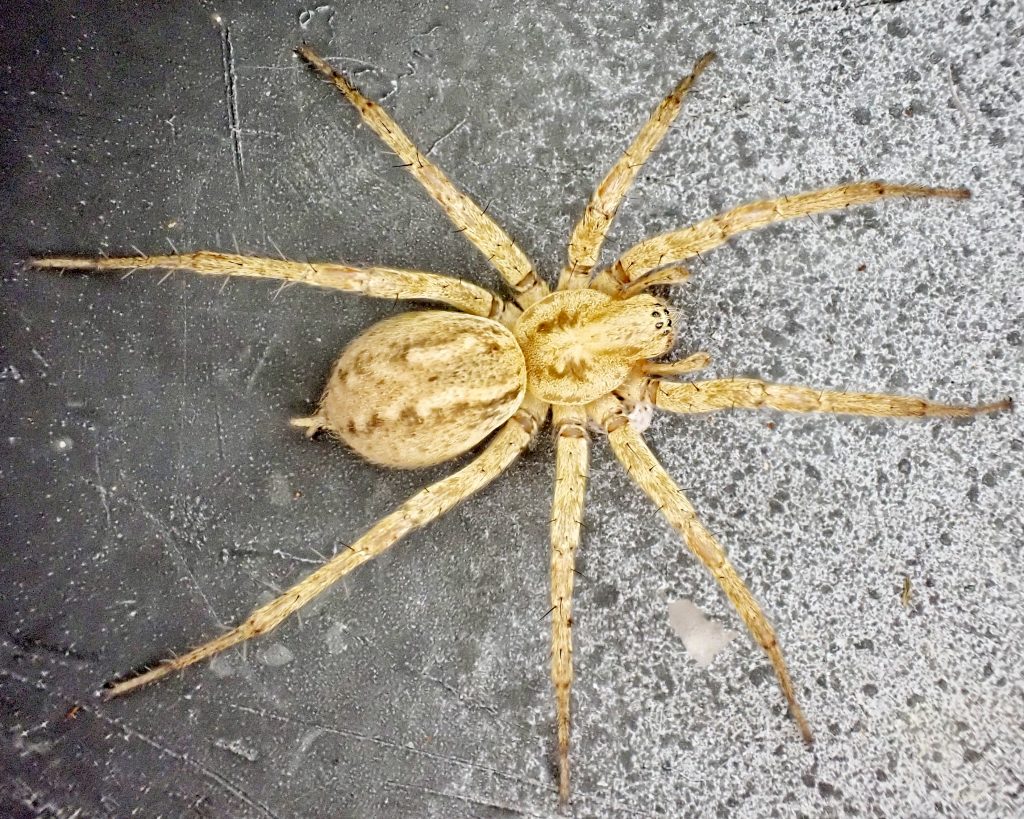
Habitat– Seems to be found in brushy areas of open forests and forest edges, and Rod Crawford said- “That species has a great tendency to make webs on woody plants rather than grass/herbs.”
Range– Endemic to the PNW; only found west of the Cascades (with a slight eastward extension in the Columbia River Gorge), from s BC to s Oregon, and in sw Oregon/nw California; Observations · iNaturalist
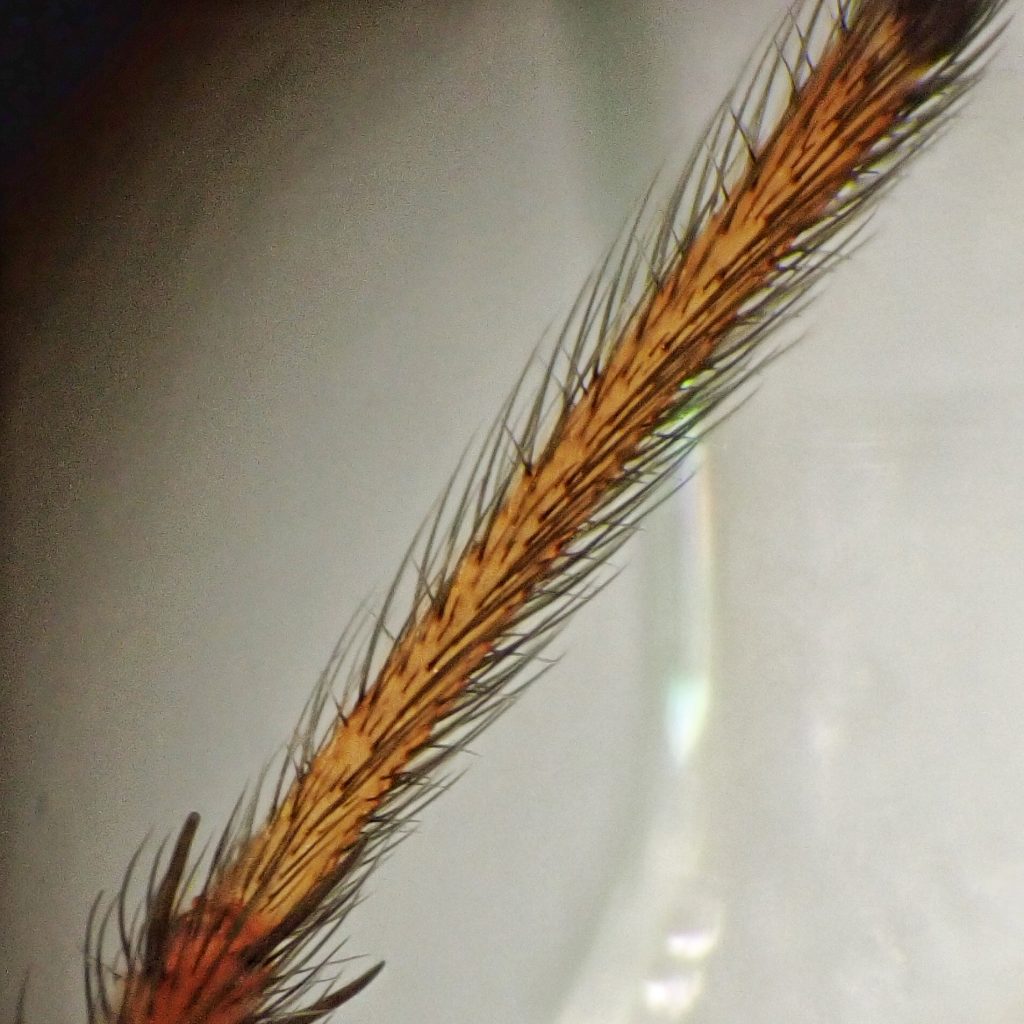
Eats– Anything that wanders into their web and can be subdued, including plant bugs, leaf hoppers, orthopterans, dipterids, and other spiders.
Eaten by– Probably parasitized by spider wasps (family Pompilidae), and preyed upon by insectivores of all classes.
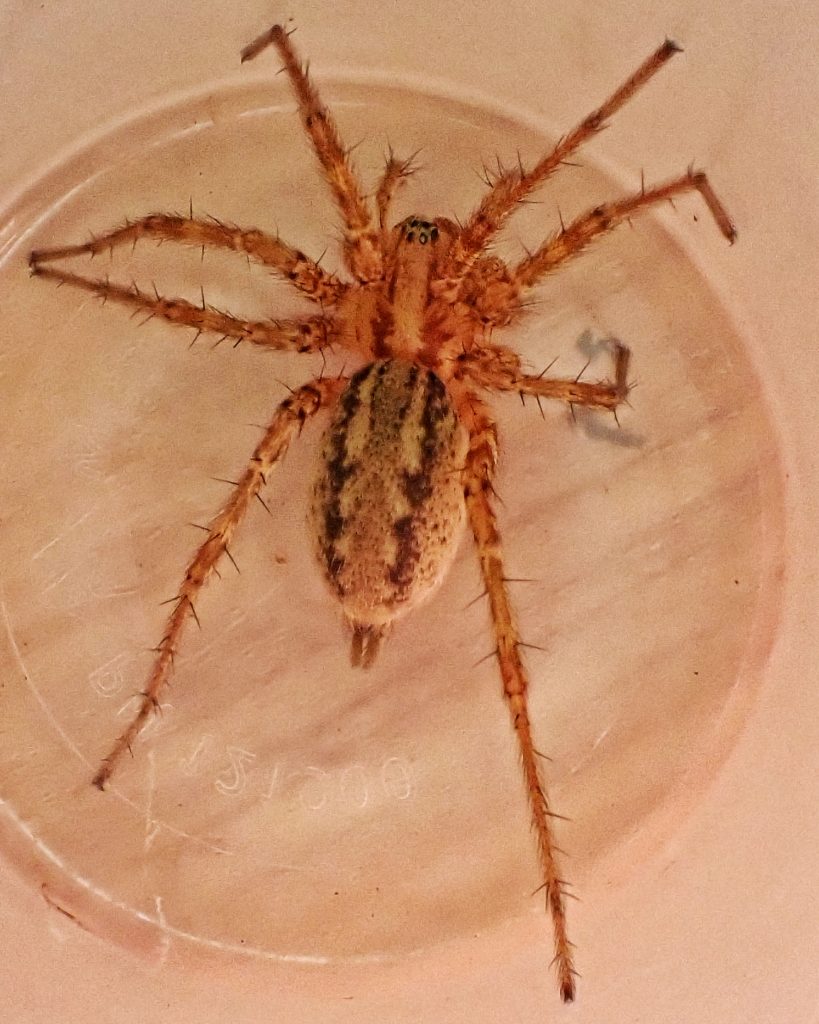
Life cycle– Rod also said- “There has been very little specific study on the biology of this particular species.”; agelenids in general mature in late summer/fall, and eggs are placed in a cocoon which is hidden in the funnel shaped retreat; it seems likely that the eggs overwinter, and hatch in the spring.
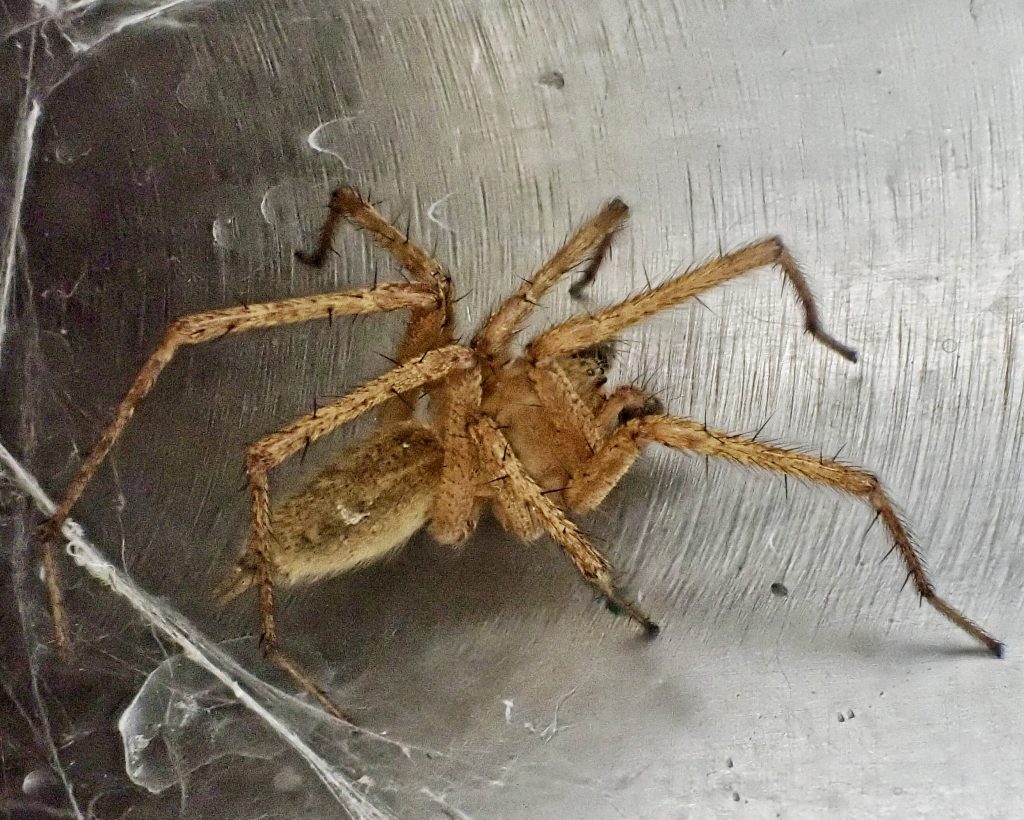
Adults active– Late summer into early winter.
Etymology of names– Agelenopsis is from the Greek suffix for ‘having the appearance of’, added to the genus name Agelena, which are similar spiders in the same family. The specific epithet oregonensis is from the location of the type specimen.
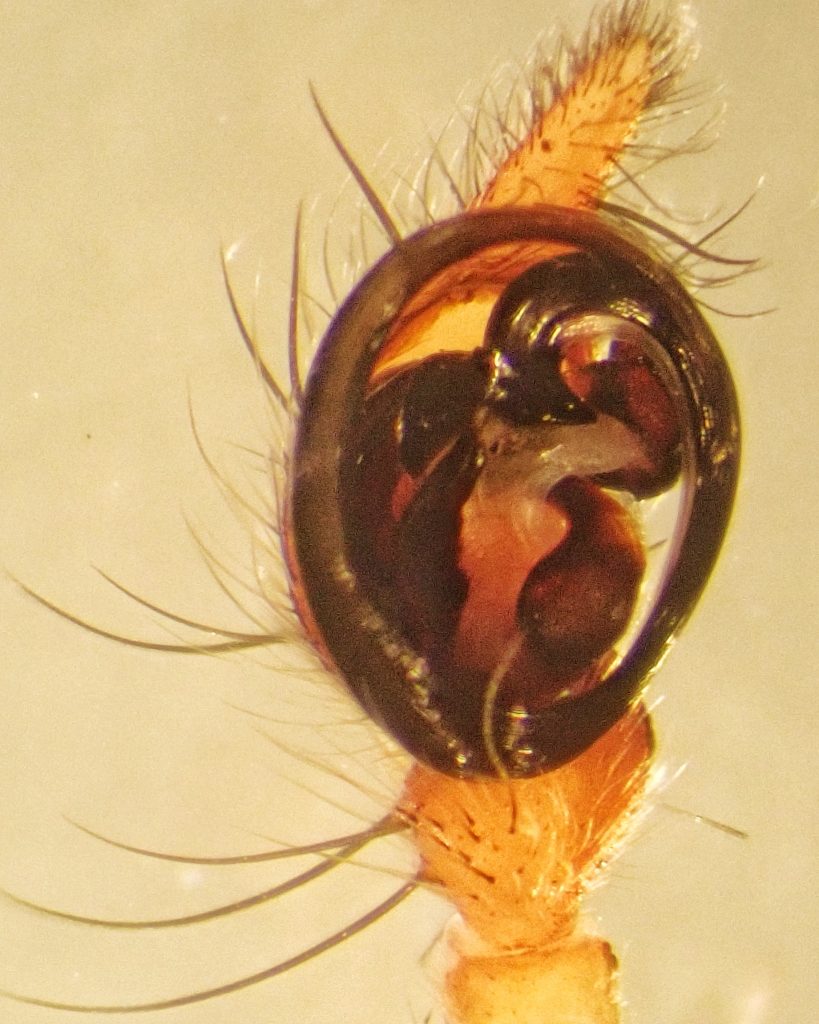
Species Agelenopsis oregonensis – Oregon Funnelweb Spider – BugGuide.Net
https://wsc.nmbe.ch/pdfdownload/a81cdcff6e5fda3fdc33ba6c0ff740b67M857vRa2TKIZ5U
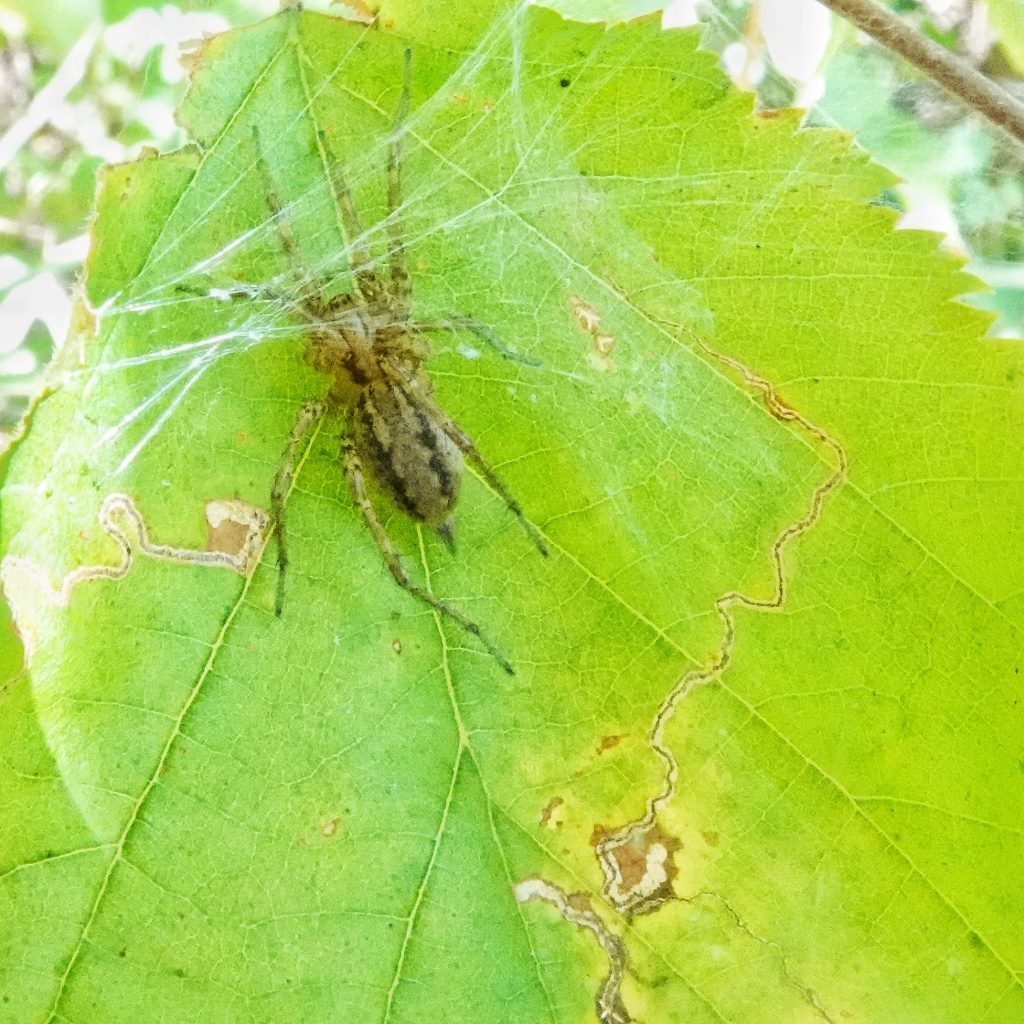
Nice write up Dan! I found a female the other day and spent the morning under the scope photographing her for Rod. She had an atypical epigynum, most similar to A. oregonensis, but Rod wanted to rule out A. actuosa. I was sorry she had such a brief life in captivity. Was hoping to see if I could overwinter her inside.
But at least it’s always fascinating to look at spiders under a microscope, Cynthia!